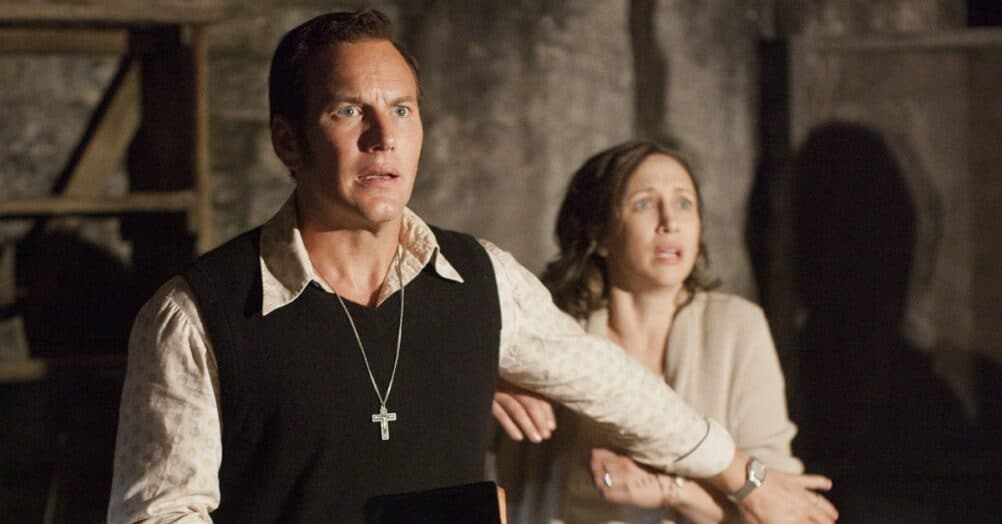
Welcome to The Best Movie You NEVER Saw, a column dedicated to examining films that have flown under the radar or gained traction throughout the years, earning them a place as a cult classic or underrated gem that was either before it’s time and/or has aged like a fine wine.
This week we’ll be looking at Peter Weir’s FEARLESS!

THE STORY:
After surviving a horrific plane crash, Max Klein finds that his life is no longer the same. Unable to connect with his family and harboring a sense of invulnerability, Max forges a relationship with a grieving mother who lost her baby in the same crash. In order to find their way back to the “real world” the two must come to terms with what they lost and what they gained.
THE PLAYERS:
Based on the novel (and screenplay) by Rafael Yglesias, the film is directed by Peter Weir (THE TRUMAN SHOW) and stars Jeff Bridges as Max Klein, Rosie Perez as Carla Rodrigo, Isabella Rossellini as Laura Klein, Tom Hulce as a money-hungry lawyer, Brillstein, John Turturro as Dr. Bill Perlman, an airline shrink, and a young Benicio Del Toro as Manny Rodrigo, the equally money-hungry husband to Carla.

THE HISTORY:
Director Peter Weir has a very distinct filmmaking style, fraught with a deep, emotional connection to the characters featured in his films, so it’s no surprise that after 1990’s GREEN CARD he went looking for something new, challenging, and left of center. Producer Mark Rosenberg led him to the spec script for FEARLESS by author Rafael Yglesias and Weir was sold on what he referred to as a “broken script.”
By that, Weir saw a brilliantly written script that contained two movies instead of one and decided that it was the challenge he wanted with themes he was keen to explore. Weir initially tried to get Mel Gibson for the role of Max, but Gibson was busy readying his first directorial effort THE MAN WITHOUT A FACE and Weir ended up going with Bridges, taking a pay cut to secure him.
Although the original story took place in New York, Weir moved the setting to San Francisco, while filming the horrific plane crash sequence in northern California. The crash and resulting crash scene was based off an actual crash that took place in Sioux City, Iowa in 1989. Weir had the scene recreated with detailed accuracy, utilizing 85 acres of land and 140 extras, not to mention the plane and debris props, which totaled a cost of $2 million.

To prepare for the role of Max, Bridges consulted with his good friend and fellow actor Gary Busey, who had recently gone through a near-death experience that left him forever altered, physically, mentally, and spiritually. Bridges drew from Busey’s insight and helped shape the character of Max.
"Gary is a guy I've known for 20 years," says Bridges, "and he actually took a similar journey as the one my character takes. After his accident, he had a period of denial, where he felt almost God-like. He said he felt like an angel in an earth suit. Then, he went through this kind of irritable phase, where his two worlds were almost colliding. Gary made it evident to me that an experience like this lasts a lifetime. He's been changed forever." – Jeff Bridges, 1993
FEARLESS opened on October 15, 1993 to little fanfare. It grossed a worldwide total of $6.9 million and stands at 87% on Rotten Tomatoes. Actress Rosie Perez was nominated for Best Supporting Actress for her role, but otherwise the film went mostly unrecognized. Since then, FEARLESS has become a severely underrated gem that continues to find audiences, particularly fans of Bridges and director Peter Weir.

WHY IT’S GREAT:
"The great discovery of the cinema, this new art form, is the close-up. No one has yet come up with anything more extraordinary. With a great screen 30 feet across, to see a face, every line, every movement of every muscle, and wonder who is it inside that face? That's what I was getting into in "Fearless", thinking, ah, this is the frontier." – Peter Weir
This would sound crazy if I hadn’t heard the same thing from others, including director Peter Weir, but FEARLESS actually helped cure my fear of flying. Seeing news footage of plane crashes on TV can embed an image of absolute shock and horror that can scar you for life and that’s what happened to me at an early age. Fear of take-offs, landings, turbulence, it was all there. I was an anxiety-ridden wreck when I stepped foot into an airport, let alone an actual plane.
After seeing FEARLESS my perspective changed completely. And, that’s the key word about FEARLESS: perspective. The film is all about point of view, particularly those that faced imminent death and happened to live to tell about it, such as Bridges’ Max. The moments of the actual crash are broken up and sprinkled throughout the film, but it becomes immediately evident early on that Max has had a profound awakening, an epiphany that’s changed him forever. His calm, peaceful demeanor is evident in the first frame we see him in, walking through a cornfield, bloody, tattered, and serene. The first sight of him leaves you hinging on the question of how he got to that state of being.
And that’s the beauty of FEARLESS. It unfolds, a mystery not only of circumstance, but perspective. How did this event happen and how did this person get to be this way? It’s not a simple format where we see a plane crash, a man change, a man struggle, and a man overcome. No, that would be too simple and life isn’t that simple, especially after you’ve stared down death.

"You think you understand Max's behavior but you don't really understand. You become like a relative, saying, `What a terrible experience. But it's been three months, why aren't you over it yet?' I thought how interesting to not fully understand the central character until the end of the movie. How exciting. What an exciting structure." – Peter Weir
Max escapes the plane crash, immediately going on a detour of his existence, unable to even understand if he's actually alive. What he finds is a sort of high that comes with surviving the incident. He tests mortality again and again, from eating strawberries (he’s allergic), to stepping out into traffic, to dancing on the edge of a high-rise. Max finds that the only way to escape his fear is by taunting death, which in turn alienates him from his loved ones, who seek simply to live and love.
Max finds respite in Carla (Rosie Perez) a woman who lost her 2-year-old baby in the crash and is near inconsolable. However, she forms a quick bond with Max as they go about the difficult journey of figuring out how to live after they’ve already “died.” Perez plays the role of a mourning mother to heart-breaking perfection and although her high-pitched voice can sometimes be distracting it in no way takes away from the emotionally-charged performance she gives, which is definitely the highlight of her career.
Bridges is in such top form throughout this film. As with most of his body of work, the role is personal, thoughtful, and flawed. He’s never been a traditional movie star, even when he’s tried to be, and that’s the beauty of his work, particularly here. He’s one of those actors you can relate to, believe in, and identify with, because he seems so normal and real. His intensity, from a simple stare, tiny whisper, or primal scream, is skillfully balanced and articulated wonderfully, further showing why he’s one of the greatest living American actors.

"Jeff (Bridges) was just incredible. He went places that were well beyond the realm of conventional acting…there was absolutely no projection about what the character was going through or feeling. It was all very honest and somehow captured an essence that was just…Jeff." – Peter Weir, 1993
Isabella Rossellini as Max’s wife is strong, faithful, and intense, making the perfect fit as his rock, even when he resists her. Everyone else pulls their weight where needed, but the show belongs to Bridges and Perez, who take you on their journey with unbridled pain, emotion, and introspection. What I love so much about FEARLESS is the little moments that take you into the perspective (there’s that word again) of their characters; Carla smelling a toddler’s hair at the mall, buying Christmas gifts for their deceased family members, Max driving with his head out of the car window. There is an ample amount of moments that let the actors simply BE; Walking, breathing, staring, thinking, reacting; the moments we have in life that are so constant, yet often absent in movies in order to move the action along. With FEARLESS, the quiet moments of realization and introspection are everything and it’s a beautiful thing to witness that rise and fall of emotion.
Weir, who is a master craftsman of tapping into the really deep, transcendent aspect of humanity (see: DEAD POETS SOCIETY, THE MOSQUITO COAST, THE YEAR OF LIVING DANGEROUSLY, THE TRUMAN SHOW, WITNESS, etc.) brings it all to life with his usual blend of inspired music choices, editing techniques, shot compositions, and artfully orchestrated moments. By the time the full crash is revealed in the end it feels as if we’ve reached the crescendo of a great song, bringing everything full circle. It’s a climax that feels earned, blending tragedy with redemption, forming a fitting, purposeful ending.
FEARLESS puts into perspective that fear is what holds us back from really living and shows, beautifully, that there is only so much we can control, leaving no room for fear when it’s out of your hands. Seeing that realized onscreen for the first time, I felt that I could personally let go of the fear I had while flying, because, quite simply, there’s nothing I could possibly do if it all went haywire. The best you can do is simply to embrace the life you have for however long you have it and this is what FEARLESS did for me. There aren’t many films that can leap beyond simple entertainment and touch your life. For me, FEARLESS proves that some films can be so much more than a two-hour distraction. On a rare occasion they can truly change your life.

“I realized I could do anything I liked, as long as the story remained about life and death, or rather, love and fear, which was more to the point – you can't say anything about death because you don't know about death. You could certainly talk about fear. I used parts of the crash as flashbacks to show what the characters were still working out, the way one does after any kind of trauma.” – Peter Weir, 1993
BEST SCENE:
The opening scene is a harrowing one for sure and there are a number of beautiful “small moments” littered throughout, but the scene that epitomizes the overall metaphorical message of the film is the scene in which Max “recreates” the crash for Carla, handing her a toolbox to hold and pretend it’s her baby. It’s a true moment of clarity not only for Carla, but for the audience and features probably the best (partial) use of U2’s “Where The Streets Have No Name” in a film.
SEE IT:
FEARLESS is available on DVD and Blu-ray, as well as digital downloads at both Amazon and iTunes. Get it here!
PARTING SHOT:
"We push the recognition of our mortality down. We don't like to face it. So we make fun of it. But I think that comes at the expense of our aliveness. Because we don't face the fact that any moment could be the end, we don't really get to appreciate each moment of being alive." – Jeff Bridges, 1993




















Follow the JOBLO MOVIE NETWORK
Follow us on YOUTUBE
Follow ARROW IN THE HEAD
Follow AITH on YOUTUBE